Building Muscle: A Beginner’s Guide To Strength Training
Discover the beginner’s guide to strength training with valuable insights and tips to effectively and safely build muscle. Let’s get started on your fitness journey!
Congratulations on taking the first step towards building muscle and enhancing your strength! In this article, we will provide you with a beginner’s guide to strength training, offering you valuable insights and tips to help you embark on your fitness journey with confidence and enthusiasm. Whether you’re eager to sculpt an impressive physique, increase your athletic performance, or simply improve your overall health, this guide will equip you with the necessary knowledge to kickstart your muscle-building adventure. So, let’s get started and discover the key principles, exercises, and strategies that will empower you to build muscle effectively, safely, and enjoyably.
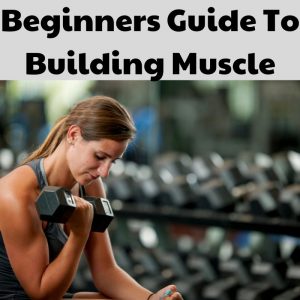
Benefits of Strength Training
Strength training has numerous benefits that can positively enhance your life. One of the most notable benefits is the increase in muscle mass. By engaging in strength training exercises, you can promote muscle growth and achieve a more defined and sculpted physique. Not only does this aesthetic benefit boost your confidence, but it also improves your overall strength and endurance.
Another advantage of strength training is the boost in metabolism it provides. Muscle is metabolically active tissue, meaning that it burns more calories than fat even at rest. By increasing your muscle mass through strength training, you can rev up your metabolism and increase your daily calorie burn. This can be especially beneficial if you are looking to lose weight or maintain a healthy weight.
In addition to the physical benefits, strength training also promotes bone density. As we age, our bones naturally become more fragile, making us more susceptible to injuries and conditions like osteoporosis. However, by engaging in weight-bearing exercises such as strength training, you can stimulate bone growth and maintain or improve your bone density. This can significantly reduce the risk of fractures and other bone-related issues in the long run.
Another advantage of strength training is the enhancement of body composition. While weight loss is often associated with a decrease in both fat and muscle mass, strength training helps preserve lean muscle mass while primarily targeting fat loss. This results in a more favorable body composition where there is a higher proportion of lean muscle to fat. Not only does this improve your physical appearance, but it also contributes to better overall health.
Setting and Prioritizing Goals
Before embarking on your strength training journey, it is crucial to set specific goals that you can work towards. To do this effectively, start by selecting the specific muscle groups you want to focus on. Whether it’s your arms, legs, or core, identifying your target areas will help you tailor your workouts accordingly.
Once you have determined your focus areas, it is essential to set realistic and achievable goals. These goals should be challenging enough to motivate you but not so overwhelming that they become unattainable. By setting reasonable objectives, you set yourself up for success and prevent discouragement along the way.
To further break down your goals and make them more manageable, consider splitting them into smaller milestones. By doing so, you can track your progress more effectively and experience a sense of accomplishment as you reach each milestone. This approach also allows you to make necessary adjustments to your training program as you go along, ensuring continuous improvement.
Getting Started: Equipment and Safety
When it comes to strength training, selecting the right gym or home setup is crucial. If you decide to join a gym, choose one that offers a variety of equipment and a supportive environment. On the other hand, if you prefer working out at home, invest in quality equipment that caters to your specific needs. It is important to have access to the necessary tools to ensure efficient and effective workouts.
Understanding and using proper equipment is vital to prevent injuries and maximize the benefits of your strength training routine. Take the time to familiarize yourself with the equipment and ask for guidance if needed. Using equipment correctly not only ensures safety but also ensures that you are targeting the intended muscle groups and optimizing your workout.
Before diving into your workout, always remember to warm up and stretch properly. This helps prepare your body for the upcoming physical activity and reduces the risk of injury. Incorporating dynamic movements that mimic the exercises you will be performing can help activate the muscles and get your blood flowing. Additionally, stretching can improve flexibility and range of motion, enabling you to perform exercises more effectively.
Practicing correct form and technique is essential in strength training. Improper form not only diminishes the effectiveness of the exercise but also increases the risk of injury. Take your time to learn the proper form for each exercise and focus on maintaining it throughout your workout. If you are unsure about proper technique, consider seeking guidance from a personal trainer or fitness professional.
In any physical activity, safety should always be a top priority. When engaging in strength training, be mindful of your body’s limitations and listen to any warning signs. Know your weightlifting capabilities and gradually increase the intensity as you progress. It is also important to use safety measures such as wearing appropriate footwear and using spotters when necessary. By prioritizing safety, you can ensure a enjoyable and injury-free strength training journey.
Designing a Workout Program
To effectively utilize the benefits of strength training, it is essential to design a well-rounded workout program that suits your individual needs and goals. Consider the following factors when designing your program:
- Choose the right training split: The training split refers to how you divide your workouts throughout the week. Options include full-body workouts, upper/lower splits, or specific muscle group splits. Select a training split that aligns with your goals and allows for efficient training.
- Decide on training frequency and intensity: Determine how many days per week you will dedicate to strength training. This will depend on your schedule, recovery abilities, and overall fitness level. Additionally, consider the intensity of your workouts and adjust it based on your experience and goals.
- Incorporate compound and isolation exercises: Compound exercises involve multiple muscle groups and are highly efficient for overall strength and muscle building. Examples include squats, deadlifts, and bench presses. Isolation exercises, on the other hand, target specific muscles and can be beneficial for targeting lagging or weaker areas.
- Balance upper and lower body exercises: To ensure overall strength and proper physique development, it is important to include exercises that target both the upper and lower body. This creates a balanced physique and reduces the risk of muscular imbalances.
- Allow for rest and recovery: Rest and recovery are crucial components of any workout program. Your body needs time to repair and rebuild the muscles after intense training sessions. Adequate rest periods and recovery days should be incorporated into your program to prevent overtraining and promote optimal results.
By considering these factors and tailoring your workout program accordingly, you can optimize the benefits of strength training and achieve the desired results.
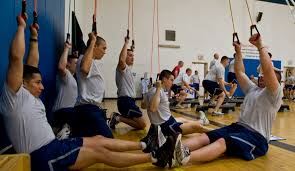
Exercise Selection
When it comes to strength training, selecting the right exercises is key to achieving your goals. Here are some considerations to keep in mind:
- Compound exercises for overall strength: Compound exercises involve multiple muscle groups and are highly effective in building overall strength and muscle mass. Examples include squats, deadlifts, bench presses, and pull-ups.
- Isolation exercises for specific muscle targeting: Isolation exercises focus on a particular muscle group, making them useful for targeting specific areas or addressing muscle imbalances. Examples include bicep curls, tricep extensions, and calf raises.
- Free weights vs. machines: Both free weights and machines have their advantages. Free weights require more stabilization and engage additional muscles, while machines provide more stability and are ideal for beginners or individuals with specific limitations. Incorporating a combination of both can maximize your workout effectiveness.
- Bodyweight exercises for beginners: Bodyweight exercises are an excellent option for beginners or those who prefer to work out at home with minimal equipment. Exercises such as push-ups, squats, lunges, and planks can effectively target multiple muscle groups and build strength.
- Incorporating cardiovascular exercises: While strength training focuses on building muscle and strength, it is important to also incorporate cardiovascular exercises into your routine. This helps improve cardiovascular health, burn additional calories, and enhance overall endurance. Options include jogging, cycling, swimming, or using cardio machines at the gym.
By including a variety of exercises in your strength training routine, you can target different muscle groups, promote overall strength, and achieve a well-rounded physique.
Progressive Overload
Progressive overload is a fundamental principle in strength training that involves consistently challenging your muscles to adapt and grow. Here are some key points to consider:
- Understanding the principle of progressive overload: Progressive overload refers to gradually increasing the demands placed on your muscles over time. Whether it’s increasing weight, reps, or sets, the goal is to continually challenge your muscles to promote growth and strength gains.
- Increasing weight, reps, or sets over time: To implement progressive overload, aim to gradually increase the weight you lift, the number of repetitions, or the number of sets you perform. This gradual increase stimulates muscle growth and ensures ongoing progress.
- Implementing advanced techniques like drop sets or supersets: To further challenge your muscles and break through plateaus, consider implementing advanced techniques such as drop sets or supersets. Drop sets involve reducing the weight after reaching muscle fatigue, while supersets involve performing two exercises back to back with minimal rest.
- Listening to your body and avoiding overtraining: While progressive overload is important, it is equally crucial to listen to your body and avoid overtraining. Pushing yourself too hard without proper recovery can lead to injuries, burnout, and hinder your progress. It is essential to find the right balance between challenging yourself and allowing for adequate rest.
By gradually increasing the demands placed on your muscles and consistently challenging yourself, you can effectively implement progressive overload and maximize the benefits of strength training.
Nutrition and Muscle Growth
Nutrition plays a crucial role in muscle growth and overall fitness. Here are some key factors to consider:
- Importance of a balanced diet: A balanced diet that includes a variety of nutrients is essential for overall health and muscle growth. Focus on consuming a wide range of whole foods, including lean proteins, fruits, vegetables, whole grains, and healthy fats.
- Consuming sufficient protein for muscle repair and growth: Protein is essential for muscle repair and growth. Aim to consume an adequate amount of high-quality protein sources, such as lean meats, poultry, fish, eggs, dairy products, legumes, and plant-based protein alternatives.
- Meeting calorie and macronutrient needs: To support muscle growth, it is important to consume enough calories and macronutrients. Calculate your calorie needs based on your goals and ensure that you are consuming an appropriate balance of carbohydrates, proteins, and fats.
- Hydrating adequately: Staying hydrated is essential for optimal performance and muscle functioning. Aim to drink enough water throughout the day, especially before, during, and after your workouts.
- Considering supplements: While not necessary for everyone, certain supplements can support muscle growth and recovery. Consult with a healthcare professional or registered dietitian to determine if any specific supplements are appropriate for you.
By prioritizing a balanced diet, consuming sufficient protein, and meeting your calorie and macronutrient needs, you can fuel your body for optimal muscle growth and overall health.
Recovery and Rest
Recovery and rest are vital components of a successful strength training program. Here are some key aspects to focus on:
- Getting enough quality sleep: Sleep is crucial for muscle recovery and growth. Aim for 7-9 hours of quality sleep per night to optimize recovery and ensure your body has sufficient time to repair and rebuild.
- Incorporating rest days into your training program: Building rest days into your training program is essential for allowing your muscles to recover. Avoid consecutive days of intense training and prioritize rest days to prevent overtraining and maintain overall health.
- Utilizing foam rolling and mobility exercises: Foam rolling and mobility exercises can help alleviate muscle soreness and improve flexibility. Incorporate these exercises into your routine to aid in recovery and enhance overall mobility.
- Managing stress levels: Stress can negatively impact your recovery and progress. Find healthy ways to manage stress, such as practicing mindfulness, yoga, or engaging in relaxation techniques. High-stress levels can hinder your muscle growth and overall well-being.
- Listening to your body’s cues: Pay attention to your body’s signals and adjust your training program accordingly. If you are feeling excessively fatigued, experiencing pain, or not seeing progress, it may be a sign that you need to take additional rest or modify your routine.
By prioritizing recovery, rest, and stress management, you can optimize your muscle growth, prevent injuries, and sustain long-term success in your strength training journey.
Tracking and Monitoring Progress
Tracking and monitoring your progress is essential to stay motivated and make necessary adjustments to your strength training program. Here are some ways to do so:
- Keeping a workout journal: Maintain a workout journal where you record your exercises, sets, reps, and weights. This allows you to track your progress, identify areas for improvement, and celebrate achievements.
- Taking progress photos and measurements: Progress photos and measurements are visual representations of your transformation. Regularly take photos and measurements to monitor changes in your body composition and muscle development.
- Monitoring strength and endurance gains: Track your strength and endurance gains by consistently testing your strength and recording your performance. This can include measuring the amount of weight you lift, tracking the number of repetitions you can complete, or monitoring improvements in your overall performance.
- Tracking body composition changes: Along with weight and measurements, tracking changes in your body composition is essential. This can include measuring body fat percentage, determining muscle mass, or using tools like skinfold calipers or body composition scans.
- Reassessing and adjusting goals: Regularly reassess your goals and make necessary adjustments to your training program based on your progress and aspirations. Celebrate milestones and set new goals as you continue to grow and develop.
By tracking and monitoring your progress, you can stay motivated, identify areas for improvement, and make informed decisions to optimize your strength training journey.
Staying Motivated
Staying motivated is crucial to sustaining a consistent strength training routine. Here are some tips to keep your motivation levels high:
- Finding a workout buddy or joining a community: Exercising with a workout buddy or joining a fitness community can provide additional support, accountability, and motivation. Surrounding yourself with like-minded individuals can make your strength training journey more enjoyable and rewarding.
- Setting rewards for reaching milestones: Rewarding yourself for reaching milestones can help maintain motivation. Set small rewards for accomplishing specific goals, such as treating yourself to a massage or buying new workout gear. These rewards can act as powerful motivators along the way.
- Setting realistic expectations: It is important to set realistic expectations for your strength training journey. Understand that progress takes time, and building strength and muscle is a gradual process. By setting realistic expectations, you can avoid unnecessary frustrations and stay focused on long-term success.
- Switching up your workout routine: Variety is key to prevent boredom and maintain motivation. Incorporate different exercises, training techniques, or workout formats to keep your routine fresh and exciting. Trying new challenges can reignite your enthusiasm and keep you engaged throughout your strength training journey.
- Remembering your initial reasons for starting: Reflect on your initial reasons for starting strength training. Whether it’s improving your health, boosting your confidence, or achieving specific fitness goals, keep these motivations at the forefront of your mind. Reminding yourself of the reasons you started will help you stay dedicated and committed to your fitness journey.
By implementing these strategies, you can stay motivated, focused, and enthusiastic about your strength training routine.
In conclusion, strength training is a powerful tool for improving your physique, overall health, and quality of life. By understanding the benefits of strength training, setting and prioritizing goals, utilizing the right equipment and safety measures, designing an effective workout program, selecting appropriate exercises, implementing progressive overload, prioritizing nutrition and recovery, tracking progress, and staying motivated, you can embark on a successful strength training journey and achieve the results you desire. Remember, consistency and dedication are key, and with the right approach, you can transform your body and unleash your full potential.

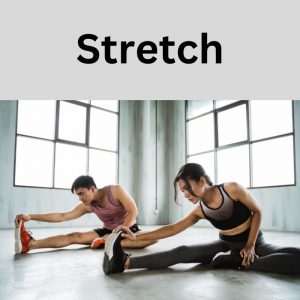




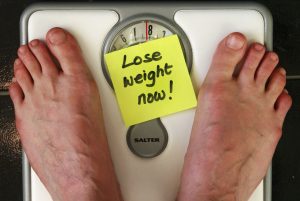
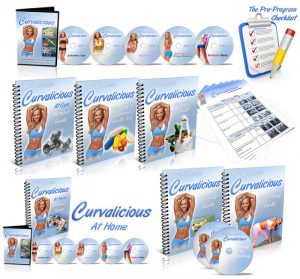 Flavia Del Monte has just released her newest workout program designed specifically for women. Our Curvalicious workout review will reveals everything about her latest Flavilicious Fitness program. Find out how this program can get you the flawless female figure you diseire . If you already know and love Flavias stuff you can check out the Curvalicious Workout Here, or read on for my sneak peak review.
Flavia Del Monte has just released her newest workout program designed specifically for women. Our Curvalicious workout review will reveals everything about her latest Flavilicious Fitness program. Find out how this program can get you the flawless female figure you diseire . If you already know and love Flavias stuff you can check out the Curvalicious Workout Here, or read on for my sneak peak review. your legs.
your legs.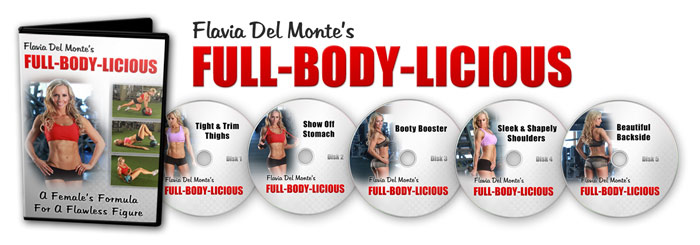
 saw a flaw in most products and the way women in general were training and with that Flavilicious Fitness was born. I have seen the workouts first hand and can tell you this is a whole different approach to Female training and the science shows it WILL work. Flavia Del Monte is not just a fitness model plugging a new product or a famous celebrity using their looks to promote a product. She is a Registered nurse, Certified personal trainer and certified nutritionist from one of the most prestigious programs in the world, Precision Nutrition created by Dr. John Berardi and Ryan Andrews (MS, MA, RD).
saw a flaw in most products and the way women in general were training and with that Flavilicious Fitness was born. I have seen the workouts first hand and can tell you this is a whole different approach to Female training and the science shows it WILL work. Flavia Del Monte is not just a fitness model plugging a new product or a famous celebrity using their looks to promote a product. She is a Registered nurse, Certified personal trainer and certified nutritionist from one of the most prestigious programs in the world, Precision Nutrition created by Dr. John Berardi and Ryan Andrews (MS, MA, RD).